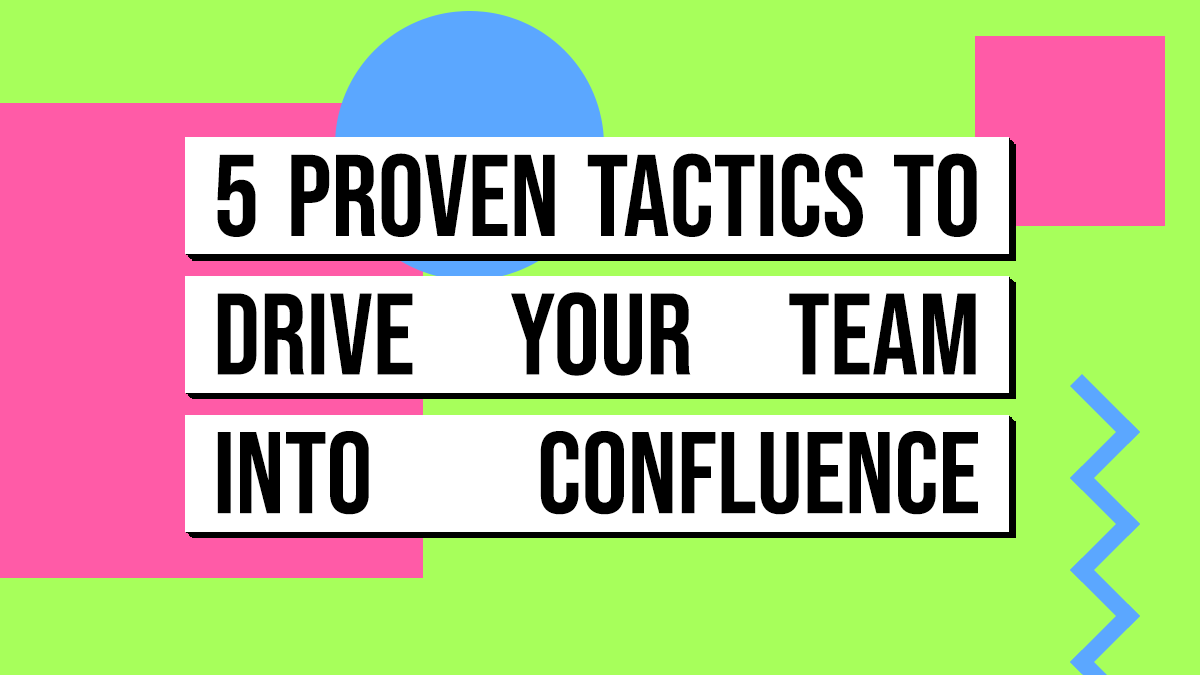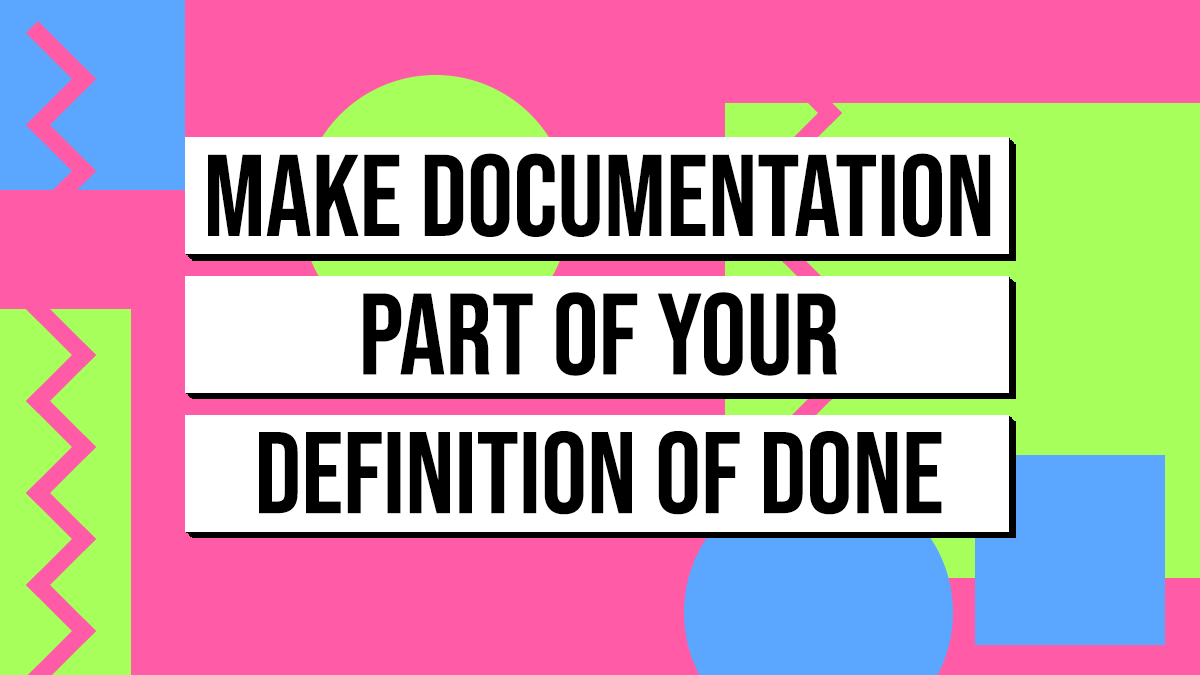
You can have the cleanest Confluence space in the world, but if no one uses it, what’s the point?
If you’re the appointed Confluence space admin (be it volunteered or voluntold), it is your job to not just build a system– it’s also your job to get people to actually use it.
Here are five tactics that have worked across real teams (mine included) to get people consistently using Confluence.
Always Answer with a Link (or Create One)
This is my #1 move. Any time someone sends me a question, I check if the answer already exists in Confluence. If it does? I send them the link. If it doesn’t? I write it up quickly, then send the link.
This reinforces two things:
- That Confluence is the source of truth.
- That I won’t just spoon-feed answers when documentation exists.
Eventually, the habit spreads. People start checking in with Confluence first (because they know that’s what I’ll point them to anyways)
Plus, if the answer doesn’t exist in Confluence, then it should. That person identified a content gap and now you can create it.
Make Confluence Part of “Done”
Everyone cares about documentation. When it is needed and it’s there (and accurate), it’s easy to care about it. But, if nothing in the documentation changes or evolves over time, no one cares about it because it is no longer helpful.
Making sure the content is fresh can be a challenge, unless you bake it into your processes. That means adding a simple rule to your workflow:
The ticket/project/effort isn’t done until the documentation is done.
You don’t need a massive knowledgebase overnight. But if every bug fix, feature release, or infrastructure change includes a tiny doc update, your system evolves alongside your team’s work.
Appoint Page Owners – Even if That’s Just You
Pages without owners go stale. Fast.
By default, the person who creates the page is the page owner. Confluence shows the page owner automatically, but most teams don’t use that feature with intention.
Don’t let the default creator stay listed forever if they’re no longer the right person to maintain the content.
If you’ve handed off responsibility for a process, make sure you transfer ownership in Confluence too.
This does two things:
- It signals to your team who to talk to when something’s unclear.
- It builds a culture of distributed documentation ownership, so everything doesn’t bottleneck through you.
During your quarterly cleanup, review page ownership. Ask yourself, “Is this still the right person to own this?”
Create an Intuitive Confluence Space Homepage
This one’s simple, but powerful: Build a homepage that actually helps your team.
Confluence doesn’t need to feel like an endless maze. A simple, intuitive homepage gives your team a clear starting point- and sets the tone for the entire space.
Start by thinking about who is visiting the space and what they need to find. Then structure your homepage around those needs.
A solid Confluence Space Homepage can include:
- A quick intro explaining what the space is for
- Space Shortcuts in the sidebar or key pages to external pages/tools.
- A clear, scannable layout
You don’t need a designer. Just use simple layout macros, columns, and headings to guide the eye. Keep it clean, clear, and relevant.
Schedule (and Announce) Regular Cleanup Cycles
People stop trusting documentation when it’s full of outdated, conflicting, or abandoned pages. That trust is hard to win back.
The fix? Build a quarterly review habit. Pick a day each quarter to review your content:
- Delete/Archive the dead pages.
- Combine duplicated content
- Update content if anything has changed.
Even better: TELL people you’re doing it. Say: “Quarterly cleanup week is here! Please take time this week to review your content and make updates. Lets freshen up any stale content!”
You Can’t Force It, But You Can Lead It
Confluence adoption isn’t about sending one link to the content and crossing your fingers.
It’s about consistency and turning documentation into a natural part of how your team works.
You don’t need to be pushy. Just be a little persistent… It will pay off in the end.

You can have the cleanest Confluence space in the world, but if no one uses it, what’s the point?
If you’re the appointed Confluence space admin (be it volunteered or voluntold), it is your job to not just build a system– it’s also your job to get people to actually use it.
Here are five tactics that have worked across real teams (mine included) to get people consistently using Confluence.
Always Answer with a Link (or Create One)
This is my #1 move. Any time someone sends me a question, I check if the answer already exists in Confluence. If it does? I send them the link. If it doesn’t? I write it up quickly, then send the link.
This reinforces two things:
- That Confluence is the source of truth.
- That I won’t just spoon-feed answers when documentation exists.
Eventually, the habit spreads. People start checking in with Confluence first (because they know that’s what I’ll point them to anyways)
Plus, if the answer doesn’t exist in Confluence, then it should. That person identified a content gap and now you can create it.
Make Confluence Part of “Done”
Everyone cares about documentation. When it is needed and it’s there (and accurate), it’s easy to care about it. But, if nothing in the documentation changes or evolves over time, no one cares about it because it is no longer helpful.
Making sure the content is fresh can be a challenge, unless you bake it into your processes. That means adding a simple rule to your workflow:
The ticket/project/effort isn’t done until the documentation is done.
You don’t need a massive knowledgebase overnight. But if every bug fix, feature release, or infrastructure change includes a tiny doc update, your system evolves alongside your team’s work.
Appoint Page Owners – Even if That’s Just You
Pages without owners go stale. Fast.
By default, the person who creates the page is the page owner. Confluence shows the page owner automatically, but most teams don’t use that feature with intention.
Don’t let the default creator stay listed forever if they’re no longer the right person to maintain the content.
If you’ve handed off responsibility for a process, make sure you transfer ownership in Confluence too.
This does two things:
- It signals to your team who to talk to when something’s unclear.
- It builds a culture of distributed documentation ownership, so everything doesn’t bottleneck through you.
During your quarterly cleanup, review page ownership. Ask yourself, “Is this still the right person to own this?”
Create an Intuitive Confluence Space Homepage
This one’s simple, but powerful: Build a homepage that actually helps your team.
Confluence doesn’t need to feel like an endless maze. A simple, intuitive homepage gives your team a clear starting point- and sets the tone for the entire space.
Start by thinking about who is visiting the space and what they need to find. Then structure your homepage around those needs.
A solid Confluence Space Homepage can include:
- A quick intro explaining what the space is for
- Space Shortcuts in the sidebar or key pages to external pages/tools.
- A clear, scannable layout
You don’t need a designer. Just use simple layout macros, columns, and headings to guide the eye. Keep it clean, clear, and relevant.
Schedule (and Announce) Regular Cleanup Cycles
People stop trusting documentation when it’s full of outdated, conflicting, or abandoned pages. That trust is hard to win back.
The fix? Build a quarterly review habit. Pick a day each quarter to review your content:
- Delete/Archive the dead pages.
- Combine duplicated content
- Update content if anything has changed.
Even better: TELL people you’re doing it. Say: “Quarterly cleanup week is here! Please take time this week to review your content and make updates. Lets freshen up any stale content!”
You Can’t Force It, But You Can Lead It
Confluence adoption isn’t about sending one link to the content and crossing your fingers.
It’s about consistency and turning documentation into a natural part of how your team works.
You don’t need to be pushy. Just be a little persistent… It will pay off in the end.




[…] Celebrate wins when docs save the day. Call out passive resistance and coach people to include context. Start with critical, complex work first. Find a “documentation champion” to help spread the habit. If adoption still lags, these five tactics will pull people into Confluence without nagging: 5 Proven Tactics to Drive Your Team into Confluence […]